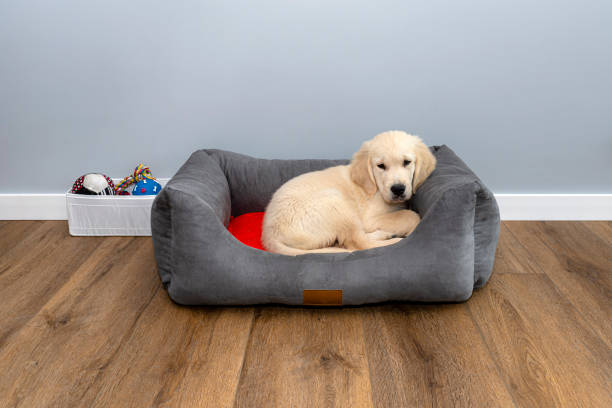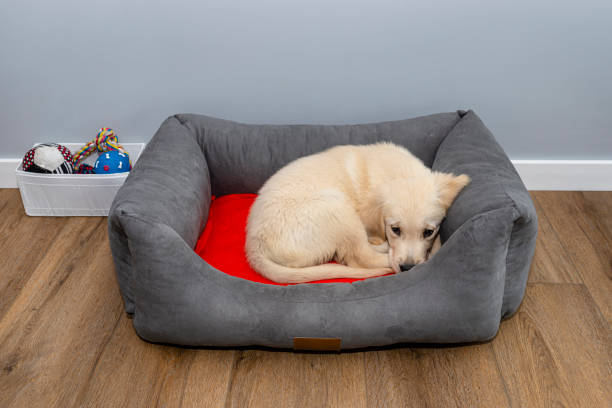Do You Know How To Clean A Kong Dog Bed. Cleaning your dog’s Kong bed is important to ensure your furry friend stays healthy and happy. A dirty bed can cause skin irritation and infections, as well as unpleasant odors. To clean a Kong dog bed, start by removing any loose dirt or debris with a brush or vacuum. Then, spot clean any stains or soiled areas with a pet-safe cleaner and a damp cloth. For a deeper clean, remove the cover and machine wash it on a gentle cycle with a mild detergent. Avoid using bleach or fabric softeners, as they can damage the bed’s material. Allow the cover to air dry completely before putting it back on the bed.
Guidelines for Cleaning a Kong Chew-Resistant Dog Bed

A chew-resistant dog bed, like a Kong bed from PetSmart or another pet retailer, will help assure that you won’t return home to a dog bed that has been ruined if you have a dog who chews everything under the sun. Fortunately, the Kong dog bed’s cover can be washed in the machine.
Certain dogs can’t be trusted to use a conventional bed. Vicious chewers will quickly destroy traditional stuffed beds, so if you want to keep the stuffing inside and the dog teeth outside, consider something a little more robust. The chew-resistant dog bed from Kong promises to last longer than conventional dog beds while maintaining many of the same fundamental cleaning procedures.
Step 1: Thoroughly vacuum the bed cover. This assists in cleaning the bed before you wash it by removing hair, grime, and other debris.
Step 2: Unzipping the nylon outer cover off the bed.
Step 3: Use cold water to wash the nylon cover in your washing machine. Separately, wash the cotton liner in hot water.
Step 4 Dry the nylon cover and cotton lining in the dryer by tumble-drying them together.
Step 5: After both are dry, re-insert the lining inside the cover and zip it up.
Regarding the Kong bed
Kong toys are renowned for being almost unbreakable and having unusual shapes. Additionally, it offers a wide selection of fun dog toys and dog beds with chew-resistant covers. The beds’ content can vary, but they are soft and cosy for your dog. A ripstop, water-resistant cloth serves as the cover. Although it isn’t fully waterproof, your dog can usually keep the bed from being destroyed.
To help you discover a bed that works for your dog, Kong offers a variety of options. For your dog to snuggle and feel secure in his space, select a cuddler bed with bolsters on three or four sides or a lounger-style bed with bolsters on two sides. For dogs with arthritis, Kong also offers a flat, orthopaedic mat bed.
Make sure the bed you select for your dog is the right size. Make sure to measure the crate if you intend to use the bed in a crate to purchase the proper-sized dog bed.
Instructions for washing a Kong crate mat
Dog beds should always be cleaned frequently because your dog will use them for naps and resting, leaving hair, grime, and drool behind. You’ll probably need to wash the bed more frequently if your dog frequently chews—whether on the bed, on bones, or toys she plays with there. The cover of a Kong dog bed can be machine washed but read the directions first. The bed itself might not be machine washable, though you might be able to hand wash it.
Check the Kong dog crate pad washing instructions before you begin because each Kong bed has a unique cover. Washing is often a straightforward operation. Just take the bed cover off and wash it in a washing machine with cold water. You can air-dry certain covers or put them in the dryer.
Make sure to keep the remainder of the bed out of your chewing dog’s reach while you wash the cover. Put the cover back on the bed and place it in your dog’s preferred location once it has dried.
Warranty for Kong beds
For toys, recovery collars, and consumables sold by authorized sellers, the Kong brand offers a 60-day satisfaction guarantee. Since this warranty doesn’t specifically cover dog beds, it is recommended to inquire about the warranty and return policy for the Kong dog bed at the pet store or other retail location.
Quit chewing destructively.
To keep your dog happy and healthy, it’s crucial to supply chew toys. Chewing is a normal behaviour in dogs. Take steps to help your dog quit destructive chewing while buying chew-resistant dog beds and toys if your dog is a strong chewer.
Teach your dog or puppy what he is permitted to chew on. Give him a chewable toy after making a harsh vocal noise to grab his attention if he tries to chew on a shoe or another prohibited item. When he plays with and chews on appropriate toys, give him lots of praise. When you can’t keep an eye on your dog, keep him contained in a puppy-proofed space to prevent harmful chewing.
Chewing can also indicate boredom from a lack of mental and physical stimulation. Make sure your dog frequently exercises each day. Exercise his mind by playing fetch or engaging him in dog puzzles or obedience training.
Why chews on my dog's blanket?
Although your dog does many other lovely things, chewing on his blanket has had to be one of the cutest. Even though it’s adorable, you’re concerned that this behavior might not be typical. You don’t want him to start thinking it’s acceptable to chew on your lovely blankets; it’s okay if he chews on the blankets you place in his crate. Is this perfectly natural, or should you strive to stop this habit before it becomes uncontrollable?

The reason dogs chew on blankets.
Dogs chew and suck on blankets to satisfy a need they had as puppies, which was to nurse from their mother. A dog may occasionally turn to objects to suck and chew on that remind him of his mother if he was not properly breastfed and weaned. For instance, if a puppy was raised as an orphan and was exclusively bottle-fed, he might subsequently attempt to nurse from another dog or resort to using a blanket.
Additionally, your dog may be chewing on things like blankets due to hunger, teething, and anxiety. Around six months, your puppy will begin to experience teething and start chewing on things to ease discomfort. Your dog could get anxious when you leave the house and start gnawing on things to calm his fears. Your dog might scent a blanket that smells like food and begin chewing it to satisfy its hunger.
How to get rid of your dog's blanket-chewing behavior
Observing when your dog chews on his blanket is the ideal first step. Does it happen when you leave the house or just before or after meals? Consider your dog’s age as well; he might just be teething and need dog toys and ice cubes to ease the pain.
Give your dog some new toys to play with rather than chastise him for chewing up his blanket. To ensure that your dog never gets bored, gather a variety of toys and switch them around every few days. As long as he isn’t hostile or snarling at you if you discover him chewing on his blanket, gently take it out of his mouth, say “uh-oh,” in a soothing tone, offer him a toy, and compliment him for chewing on it.
It’s also crucial to give your dog at least 30 minutes of exercise daily and offer him a healthy diet. If your dog has a separation anxiety problem, you might need to hire a dog sitter to take care of him while you’re gone or pay a trainer to assist you in teaching him how to handle being alone.
Chew-resistant dog bedding
You can buy chew-proof dog blankets, such as the Tough Dog Blanket Tarp, in addition to training your dog. You can also get goods from a website like Indestructible Dog, which specializes in selling stuff for canines with powerful jaws and undesirable chewing habits.
You can either purchase or make your chewing deterrent spray using 2 cups of apple cider vinegar and 1 cup of white vinegar if you don’t want to purchase a new blanket. Spray it on the blanket and other items you don’t want your dog to chew. He won’t pursue some objects because of the bitter flavour.
To be sure your dog isn’t experiencing a medical problem, you should always visit your veterinarian if your dog exhibits any unusual behavior. Although chewing on a blanket is typical for puppies, if your dog suddenly starts doing it as an adult, there might be another issue. To help you break this tendency, your veterinarian could suggest training methods or a local dog trainer.
Conclusion
Dogs may chew on blankets for various reasons, such as stress, teething (if they are puppies), hunger, or an effort to satisfy a nursing urge from their early years. Giving your dog suitable alternatives to chew on can stop your dog from engaging in a typical activity like blanket chewing. Additionally, chewing deterrent spray and chew-proof blankets are both readily available.
As with any activity, it’s a good idea to call your veterinarian if your dog starts chewing on blankets and it’s new behavior for them to ensure the new behavior is not brought on by a medical issue.
